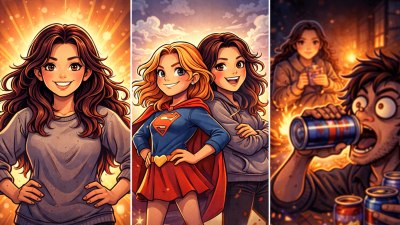Global Flavors: Exploring Culinary Traditions from Around the World
Embark on a culinary journey! Discover how global culinary traditions can inspire your cooking and broaden your palate! 🌍🍲

This image was created with the assistance of Playground AI
The world is a melting pot of diverse culinary traditions, each offering unique flavors and cooking techniques. Exploring global cuisine can be a delightful way to experience different cultures and broaden your culinary horizons.
Exploring global culinary traditions is a fantastic way to experience the diversity and richness of the world’s food cultures. By incorporating international dishes into your cooking repertoire, you can enjoy new flavors and broaden your culinary horizons.
Let’s take a gastronomic tour around the world and discover some traditional dishes, unique ingredients, and cooking methods from various countries. 🌍🍲
Italian Cuisine: The Art of Simplicity 🇮🇹
Italian cuisine is celebrated for its simplicity and focus on high-quality ingredients.
- Traditional Dishes: Pasta (such as spaghetti carbonara and lasagna), pizza, and risotto.
- Unique Ingredients: Olive oil, tomatoes, basil, and Parmigiano-Reggiano cheese.
- Cooking Methods: Slow cooking and baking, emphasizing the natural flavors of fresh ingredients.
Japanese Cuisine: Balance and Harmony 🇯🇵
Japanese food is known for its balance, precision, and harmonious presentation.
- Traditional Dishes: Sushi, sashimi, tempura, and ramen.
- Unique Ingredients: Soy sauce, miso, seaweed, and rice vinegar.
- Cooking Methods: Techniques such as grilling (yakimono), steaming (mushimono), and raw preparation (namamono).
Mexican Cuisine: Bold and Vibrant 🇲🇽
Mexican cuisine is rich with bold flavors and vibrant colors, reflecting its diverse cultural heritage.
- Traditional Dishes: Tacos, enchiladas, mole, and tamales.
- Unique Ingredients: Chilies, corn, beans, and avocados.
- Cooking Methods: Techniques include grilling, roasting, and slow-cooking to develop deep, complex flavors.
Indian Cuisine: Spice and Variety 🇮🇳
Indian cuisine is renowned for its use of spices and diverse regional dishes.
- Traditional Dishes: Curry, biryani, dosa, and samosas.
- Unique Ingredients: Turmeric, cumin, coriander, and cardamom.
- Cooking Methods: Various methods such as slow cooking, frying, and tandoor baking to enhance the richness of spices.
French Cuisine: Elegance and Technique 🇫🇷
French food is often considered the epitome of culinary sophistication and technique.
- Traditional Dishes: Coq au vin, croissants, ratatouille, and bouillabaisse.
- Unique Ingredients: Butter, garlic, truffles, and fine cheeses.
- Cooking Methods: Techniques such as sautéing, poaching, and flambéing, emphasizing precise and delicate preparation.
Thai Cuisine: Sweet, Sour, Salty, and Spicy 🇹🇭
Thai food is characterized by its balance of sweet, sour, salty, and spicy flavors.
- Traditional Dishes: Pad Thai, green curry, tom yum soup, and mango sticky rice.
- Unique Ingredients: Lemongrass, fish sauce, coconut milk, and Thai basil.
- Cooking Methods: Stir-frying, grilling, and currying, often with a focus on fresh herbs and spices.
Middle Eastern Cuisine: Aromatic and Flavorful 🇹🇷
Middle Eastern cuisine is rich in aromatic spices and bold flavors, influenced by a long history of cultural exchange.
- Traditional Dishes: Hummus, falafel, kebabs, and baklava.
- Unique Ingredients: Chickpeas, tahini, pomegranate, and za'atar.
- Cooking Methods: Techniques include grilling, roasting, and slow-cooking, often incorporating a variety of herbs and spices.
Chinese Cuisine: Diversity and Tradition 🇨🇳
Chinese food offers a vast array of regional specialties, each with its unique flavors and ingredients.
- Traditional Dishes: Dim sum, Peking duck, sweet and sour pork, and hotpot.
- Unique Ingredients: Soy sauce, ginger, garlic, and Sichuan peppercorns.
- Cooking Methods: Stir-frying, steaming, and braising, with an emphasis on preserving the natural taste of ingredients.
Practical Tips for Exploring Global Cuisine
- Start with Basics: Begin by trying simple recipes from different cuisines to get a feel for the flavors and techniques.
- Use Authentic Ingredients: Whenever possible, use authentic ingredients to capture the true essence of the dishes.
- Experiment and Adapt: Don’t be afraid to experiment and adapt recipes to your taste and available ingredients.
- Learn from Experts: Watch cooking shows, read cookbooks, or take cooking classes to learn from experts in different cuisines.













